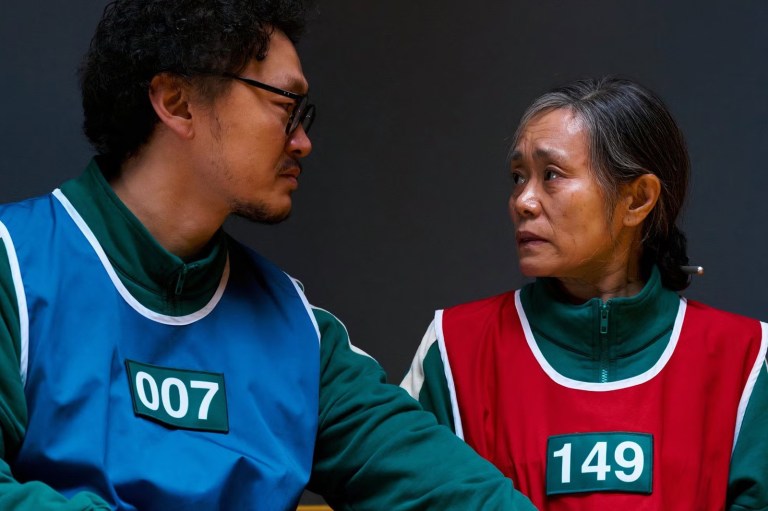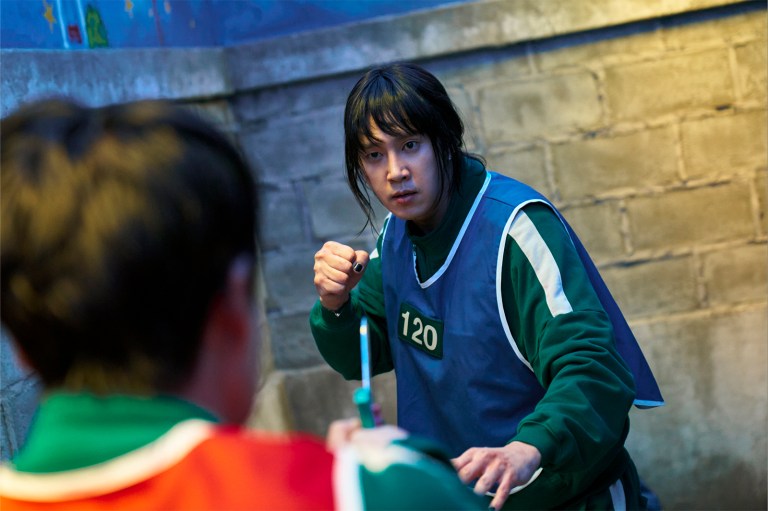
‘Survivor’ Hot Take: The All-Women Alliance Will Never Work In The New Era
Though an all-women's alliance worked in previous eras of 'Survivor,' it looks like its a strategy that's seen its torch snuffed.
By ![]() Jamie Lerner
Jamie Lerner
Since the advent of alliances in Survivor, the idea of an all-women’s alliance has intrigued players and fans as a demonstration of feminism and girl power. But rarely has a women’s alliance worked. And in the New Era of Survivor after Winners at War (2020), all the talk around potential women’s alliances has led to little or no success.
In Old School Survivor, the Black Widow Brigade was made, cementing one of the most famous alliances in Survivor history. The fact this extremely effective alliance was made up of all women and eventually led to Parvati Shallow’s win has caused male players to be threatened by the prospect of an all-women’s alliance ever since.
Simultaneously, every woman who plays Survivor surely has the possibility of a history-making alliance in their head, but it never comes to fruition in the New Era. After the talk of an all-women’s final four in Survivor 47, Episode 12, Jeff Probst shared why the all-women’s alliance (or any all-gender alliance) doesn’t seem to work in the New Era.
All-gender alliances aren’t often built on trust.

One of the reasons the Black Widow Brigade worked was because Parvati was able to unite the remaining women through long term gameplay, pulling in her original alliance with Amanda Kimmel after a tribe swap. During the tribe swap, Parvati bonded with Natalie Bolton and Alexis Jones, who were already a twosome. Because Parvati planted the seeds early in the game and built trust early, the women were able to come together successfully—so successfully that they manipulated the men into some of the most memorable blindsides in Survivor history.
However, the New Era doesn’t allow for this type of game play with its fast pace, lack of tribe swaps, and the advent of voting blocks. Instead of hard and fast alliances in the New Era, the game is much more fluid, allowing players to flip on one another more often. In an all-gendered alliance, if one or two women feel like they are on the bottom, they would be incentivized to switch sides. And if some of the women built a stronger bond with men from their original tribes that they feel they could beat at the end, the promise of an all-women’s alliance isn’t that enticing.
In the New Era, the best way to build a voting block is to build trust, and trust can’t be built on shared gender alone. Similar interests, backgrounds, or even just perspective on the game is a much more effective way to build an alliance, so something superficial like gender isn’t sticky enough glue to hold a group of women or men together.
In the Dec. 4, 2024, episode of On Fire with Jeff Probst, host Jeff explains:
It’s already a very, very, very difficult thing to keep a group of four or five people together in any situation for any amount of time. So if you initially base it merely on gender, you are giving up so many other important factors. ‘Do we even think the same way strategically? Do I trust you?’
It can’t be ‘I trust you because we’re the same gender.’ Do I think I can beat you even though I know you think you can beat me? So there are just a lot of variables that go into forming a great alliance. And the minute anyone on the outside senses that it could be based on something as visual as gender, I think it just makes it a lot tougher.
More advantages make it more important for alliances to be secret.
Almost every player in the New Era is a Survivor superfan. Funnily enough, the Black Widow Brigade formed in the first Fans vs. Favorites season, so the players had a similar love for Survivor. The difference, however, is that they had no former example of a manipulative and successful female alliance before them. Now in the New Era, every fan comes in thinking about the history of Survivor, so the talk of an all-women’s alliance is almost always in the pot, although it rarely comes to fruition.
In Season 47, Tiyana first pitched the all-women’s alliance, but her former female tribe members trusted Gabe more than they trusted her, so the first attempt of the season was a no-go. Beyond this, however, the opposite gender will always be somewhat suspicious that all the women or men are aligning together, which makes it harder to pull off a blindside. How could they achieve a successful big move if alliance lines are so obvious? A secret alliance is always the most effective because the other players then don’t see their play coming. Even if four or five women want to work together to get to the end, someone will always be on the bottom. The plethora of advantages makes it even more important than before to orchestrate blindsides in the New Era, which is exponentially harder with an obvious alliance.
Casting is more diverse in the New Era, which leads to more variety within genders.
One of the best aspects of the New Era is Survivor’s commitment to diverse casting. Before, it was very common for most of the women in a season to be traditionally attractive young women who probably would be friends (or frenemies) in the real world. Even outside of this reality-television ideal of a woman, Survivor was casting archetypes, so women in previous seasons may have had more in common with one another. However, the New Era casts based on players’ abilities to tell stories, to pop off the screen in personality, and to create an unpredictable game. This isn’t to suggest that women from different walks of life can’t get along, but just to say that players have other ways of connecting with each other besides gender.
“Big-move-itis” is alive and well in the New Era.
In the New Era of Survivor, every player is a fan who wants to make their mark on the long-running series. One of the most common strategies now is to lay low for the first half of the game and start building a resume in the second half to win over the jury’s votes during the Final Tribal Council. What this means, however, is that any group that comes together—whether all men, all women, or any other commonality—has even less of a chance of staying together for more than a vote or two. We’ve seen voting blocks shift throughout each season with only two major alliances dominating their respective seasons: the Tika Three in Season 44 and the Reba Four in Season 45. If a group of women can come together in the New Era, the likelihood that someone will flip is even higher in the New Era, not just because of fluid gameplay, but because separating oneself from the group may be the only way to stand out and win at the end.











